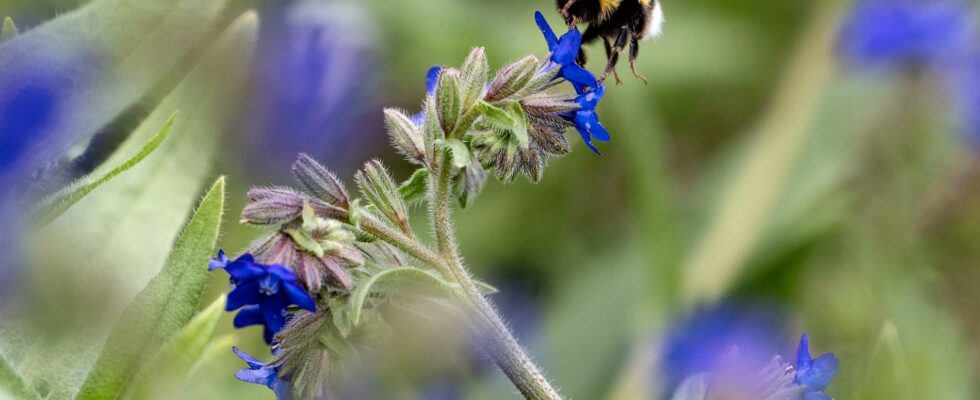Published: Less than 20 min ago
A reduced buzz in the summer discounts may soon be a fact. A new study shows that certain species of bumblebees are finding it difficult to cope in the increasingly hot climate.
– We are seeing worrying trends, says Anna Persson, one of the researchers behind the study.
When the sun warms winter-cold cheeks and the last of the gravel has been swept away from the walkways, it’s time for the first bumblebees to make their entrance. A sign of spring that comes earlier and earlier every year, according to the study from Lund University.
The first bumblebees on Skåne’s plains wake up about two weeks earlier than 100 years ago, because the spring sun thaws the ground earlier now. Across the country, the first flight takes place an average of five days earlier now than just 20 years ago.
More difficult for late species
But not everyone is equally keen on waking up early. According to Anna Persson, the species that wake up later have not advanced their first flight and therefore suffer when the blooms occur earlier and earlier.
– It is the later species that decline more, and there we saw a very clear negative correlation between when they wake up and how much they have decreased in number over 100 years, she says.
– You can already see a risk of a lack of flowers in the middle of summer. If you are a species that wakes up a little later, you might end up in the middle of this gap, where there are no flowers.
There are 40 different species of hops in Sweden and they complement each other. Some of those that wake up later have a longer tongue to pollinate pea plants such as red clover. Fewer such bumblebees means less red clover in the summer meadows and a vicious circle begins.
Variety can help
Persson says that one way to make it easier for the bumblebees is to have a more varied landscape, which is less sensitive to the rising temperatures. When the study compared Skåne’s plain countryside with other Scanian terrain types, only the effects were seen in the former.
– If you have a more varied landscape, there are more shady places where the temperature can be kept down a bit, and then the bumblebees don’t wake up as early in the spring. There you really see the benefit of having a landscape perspective and how to take care of the landscape. It can either reinforce or buffer against climate change, says Anna Persson.
Facts
Actions that slow down the effects
Society can do that:
+ Preservation of natural grasslands, such as natural pastures.
+ Then mowing at roadsides, after the flowering period.
+ Flower strips and hedges designed in a way that favors pollinators.
+ Increased sowing of clover-rich willow plantations which are partially allowed to bloom.
You can do that:
+ Grow plants that are found naturally in the Swedish flora instead of more exotic plants.
+ Plant perennial plants so the bumblebees can find them next year as well.
Source: Anna Persson, Lund University, and the aforementioned study (see link.springer.com/article/10.1007/s10531-023-02563-5)
Read more
